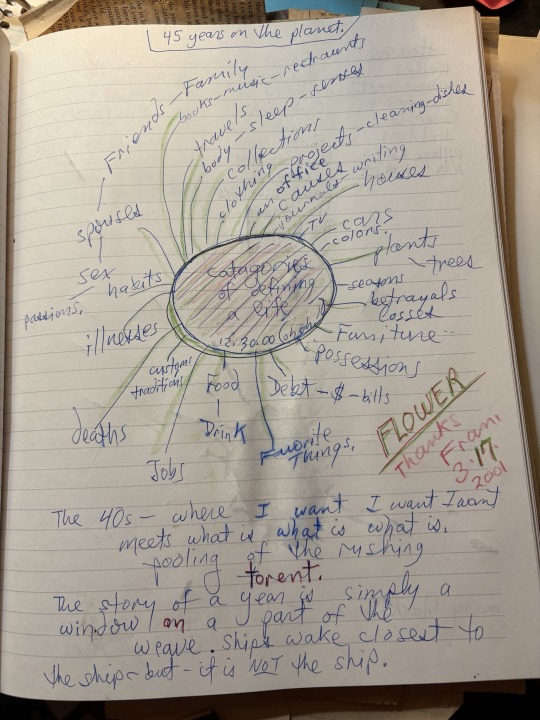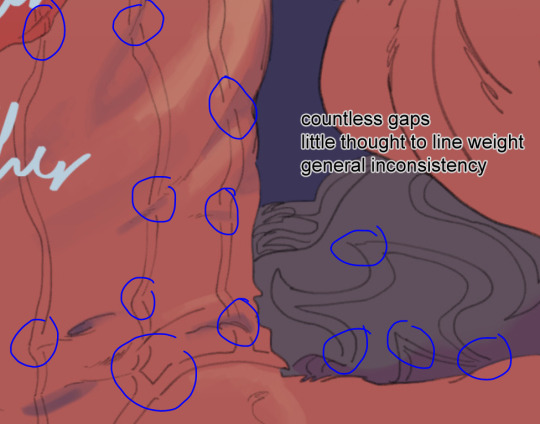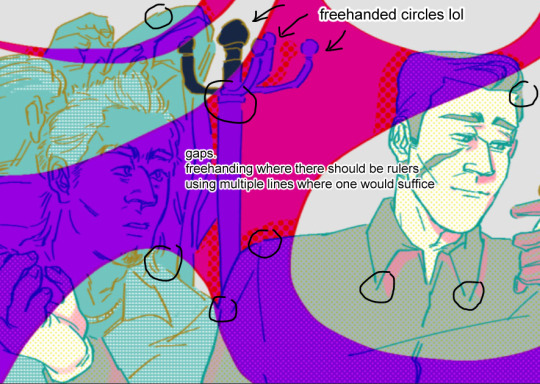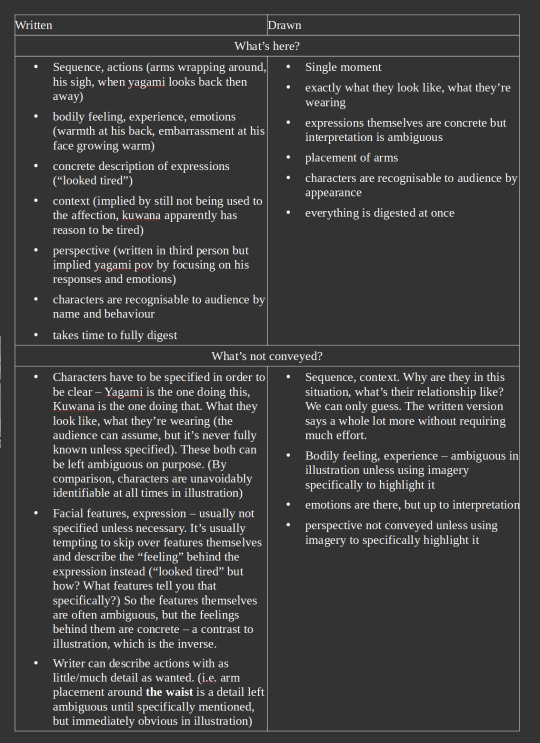#strategic tools
Explore tagged Tumblr posts
Text
Achieving Business Success with OKRs and KPIs: A Unified Approach
When discussing business strategy, there is often a debate between OKRs and KPIs. However, is it necessary to choose between the two? Should we prioritize setting challenging objectives with OKRs or constantly monitoring our business with KPIs? When discussing business strategy, there is often a debate between OKRs and KPIs. However, is it necessary to choose between the two? Should we prioritize…

View On WordPress
#aligning OKRs and KPIs#business health#business performance#crafting OKRs#Excel and Power BI#KPIs#OKRs#performance management#setting goals#strategic tools
0 notes
Text
#Affiliate marketing Journal#affiliatemarketing#workfromhome#makemoneyonline#journaling#organizers#planners#Strategic tools#Documenting your journey#content creator#content creation#Affiliate marketing tools#Success box
0 notes
Text

cursed
#bug with a big ass they could never make me hate you#brennan is genuinely a strategic mastermind#his tool? bug ass#dropout#d20#brennan lee mulligan#game changer
115 notes
·
View notes
Text

The above is the "Flower" that I took my "45 years on the planet" Iist from which I included in my last blog.
To do a Flower, draw a circle in the middle of a blank page. Write an issue or a question you are grappling with in the center. Quickly draw a line and write what comes to mind. Repeat quickly around the circle. In this way you are shutting down your mental editor.
It's a great strategizing tool. I learned it from a friend in the early 80's and have been using it ever since.
#journaling#writing#the flower#12/26/2024#beating your mental editor#strategizing tool#save the Flower after it's completed. Hang it on the wall. It speaks your truth!
23 notes
·
View notes
Text
oh god, i miss you (song/tl)
#kuwagami#cw nudity#lost judgment#kuwana jin#jin kuwana#yagami takayuki#takayuki yagami#judgment#jichanart#jichan'shandslipped#sorry for being so inconsistent tagging my suggestive content i'm still not really sure what the best way to do things would be#so here's the animated thing i mentioned working on#not my first time using csp animation tools but certainly my first time making something that looks so presentable#still very much a novice though#learnt a lot and still have a lot to learn#but very happy with this!#the moving parts aren't that complex. i tried to keep my plan strategic or it wouldn't get done#a lot of these frames i'm ehhhhh about but yknow sometimes you gotta settle and get the job done#and yeah! worth it! good job me!#anyway. i hear a breakup song. i call it kuwagami. nothing is new here
23 notes
·
View notes
Text

briony from @shepherds-of-haven 💪💪💪💪💪💪💪💪💪💪💪💪💪💪💪💪💪💪💪💪💪💪💪
#briony stormbreaker#but its buffrony skullcrusher#i started at 11pm ended at 2amish#i strategically cut off the other arm because i have a skill issuwe#i forgot the other tags i had in mind wtf#i think one of them was abt me randomly thinking abt big arm briony earlier#i love her caracther and energy#shes very slay#the number after 7#she ate#left no crumbs the moment she entered the fray#also tried out cell shadng with lasso tool#her bow probably isnt THAT big BUT#who doesnt love a comically large accessory#or maybe thats me#i gave up with the armor halfway and just started freestyling without the ref because it was 1am at that point#perhaps this doubled as a muscle shading practice#i love my improvement but also i cant tell if im jusr really inconsistent with my style#low key gving brionyb taunting someone in the arena or training ground#because who actually could beat her in a physical battle#*cricket sounds*#twas what i thought#shepherds of haven#briony#emo shery sounds fun to draw#brb gotta pass out#if anyone reads this#goodnight
49 notes
·
View notes
Text

Introduction to Retro Reflective Sheets
Retro Reflective Sheets have emerged as a sport changer in signage and traffic management. These specialized documents play a vital role in ensuring visibility and safety in load handling from road signs and markings to action grid pages What they mean, and their copies are critical to their greater visibility all recognition and impact.

History of Retro Reflective Sheets
The adventure of Retro reflective sheets lines returned to the mid-twentieth century whilst modern minds sought answers to improve nighttime visibility on roads. Initially evolved for military purposes, unfashionable-reflective materials gradually found their manner into civilian applications, mainly in visitors signage. Over the many years, improvements in technology have propelled the evolution of retro reflective sheets, making them imperative components of modern-day infrastructure.
How Retro Reflective Sheets Work
At the coronary heart of retro reflective technology lies the precept of unfashionable reflection, wherein mild is directed returned towards its source. This phenomenon is finished via the strategic association of micro prisms or glass beads at the floor of the sheet. When illuminated by headlights or other mild sources, these microscopic structures jump the light lower back to the observer, making sure most visibility even underneath low-light conditions.
Video Player
00:00
02:00
Applications in Signage
Retro reflective sheets locate massive use in numerous signage packages, which include road signs and symptoms, lane markings, and hazard indicators. Their excessive-visibility houses lead them to essential for directing motorists and pedestrians alike, especially at some stage in midnight or damaging weather conditions. Additionally, retro-reflective sheets are employed in creation web page signage to alert people and motorists to capacity hazards.

Role in Traffic Management
In the area of Traffic Management, Retro reflective sheets serve as priceless tools for reinforcing safety and efficiency. Whether applied to site Traffic cones, barricades, or delineators, those sheets significantly improve the visibility of transient traffic manage gadgets, thereby lowering the threat of accidents and site visitors congestion. By making sure clear demarcation of lanes and hazards, retro reflective sheets make a contribution to smoother traffic go with the flow and less collisions.

Advantages of Retro Reflective Sheets
One of the number one advantages of retro reflective sheets is their fantastic sturdiness and durability. Unlike conventional signage substances, including paint or vinyl, retro-reflective sheets withstand harsh climate conditions and extended publicity to daylight with out fading or deteriorating. Additionally, their lower maintenance requirements translate into savings for municipalities and transportation agencies. From an environmental perspective, the retrospective paper offers sustainability benefits by reducing waste by reducing the need for appropriate replacement.
Challenges and Limitations
Despite their several advantages, retro reflective sheets are not without challenges. Maintenance is a essential aspect, as amassed dirt or debris can impair their reflective homes through the years. Additionally, intense weather situations, which include heavy rain or snow, might also briefly lessen visibility, necessitating proactive cleaning and maintenance efforts. Additionally, ensuring compliance with safety requirements and guidelines creates a situation that requires planning for those involved in signage and site Traffic management.
Future Trends and Innovations
The future of retro reflective era holds promising traits aimed toward similarly improving performance and functionality. Ongoing research seeks to validate best practices and manufacturing processes to improve product sustainability and efficiency. Additionally, blending retro reflective sheet with smart technology, as well as connected cars and IoT systems, opens up new possibilities for enhancing visitor management and security.
Case Studies
Numerous case research exemplify the actual-global impact of retro reflective sheets in enhancing street safety and site visitors management. From busy urban intersections to remote rural highways, those examples highlight the versatility and versatility of pre-assessment signals Whereas reading successful resource management and satisfactory practices, stakeholders can gain valuable insights to optimize their individual signal management and investment in projects.
Regulations and Standards
Adherence to hooked up rules and requirements is paramount inside the deployment of retro reflective sheets. Government organizations and industry stakeholders collaborate to increase pointers ensuring the steady software and performance of retro-reflective signage. Compliance with those standards no longer handiest ensures the protection of avenue customers however also mitigates legal risks and liabilities related to non-compliance.
Environmental Impact
In an era of growing environmental focus, the environmental impact of retro reflective sheets warrants interest. While those materials offer durability and durability, end-of-lifestyles considerations, including recycling and disposal, are vital for minimizing their environmental footprint. Initiatives promoting sustainable practices, which include recycling applications and green substances, play a critical role in mitigating the environmental impact of unfashionable-reflective signage.
Comparative Analysis with Traditional Signage
A comparative analysis among retro reflective sheets and traditional signage substances highlights the superiority of the previous in terms of visibility, durability, and value-effectiveness. While conventional paint or vinyl signage might also provide preliminary price financial savings, the long-time period blessings of retro reflective generation a long way outweigh the upfront funding. Moreover, the enhanced visibility and protection furnished by means of unfashionable-reflective sheets justify their good sized adoption in modern signage programs.
Educational Initiatives
Educating stakeholders and the general public approximately the advantages and right usage of retroreflective sheets is critical for maximizing their effectiveness. Public focus campaigns, education packages, and academic materials help disseminate information approximately the significance of retro reflective signage in enhancing street safety and site Traffic management. By empowering people with information and resources, those tasks foster a lifestyle of safety and duty at the roads.
Market Trends and Growth Prospects
The market for retro reflective sheets is poised for substantial boom within the coming years, driven by increasing investments in infrastructure and transportation tasks international. Emerging economies, mainly, are witnessing fast urbanization and growth of transportation networks, fueling call for for first-rate signage and traffic management answers. Innovations in materials and era are anticipated to similarly stimulate market increase, developing possibilities for producers and suppliers inside the retro reflective industry.
Conclusion
Retro reflective sheets have revolutionized the fields of signage and traffic management, supplying unparalleled visibility and protection benefits. From road signs and symptoms to site visitors cones, those specialized materials play a vital function in guiding and protective street users, in particular at some stage in nighttime or destructive climate situations. As technology continues to advance and infrastructure wishes evolve, retro-reflective sheets will remain integral gear for making sure green and safe transportation structures worldwide.
Unique FAQs
Are retro-reflective sheets only used for road signs? Retro reflective sheets have diverse applications beyond road signs, including construction site markings, parking lot signage, and temporary traffic control devices.
Do retro-reflective sheets work in all weather conditions? While retro reflective sheets are designed to enhance visibility under various conditions, extreme weather events like heavy rain or snow may temporarily reduce their effectiveness.
Are there regulations governing the use of retro-reflective sheets? Yes, government agencies and industry organizations establish regulations and standards to ensure the proper application and performance of retro-reflective signage for road safety.
How long do retro-reflective sheets typically last? The longevity of retro reflective sheets depends on factors such as quality, exposure to elements, and maintenance practices, but they are designed to withstand years of use without significant degradation.
Can retro-reflective sheets be recycled? Yes, many retro reflective materials are recyclable, and there are recycling programs available to properly dispose of end-of-life signage materials while minimizing environmental impact.
#Retro Reflective Sheets have emerged as a sport changer in signage and traffic management. These specialized documents play a vital role in#and their copies are critical to their greater visibility all recognition and impact.#Retro Reflective Sheets#History of Retro Reflective Sheets#The adventure of Retro reflective sheets lines returned to the mid-twentieth century whilst modern minds sought answers to improve nighttim#unfashionable-reflective materials gradually found their manner into civilian applications#mainly in visitors signage. Over the many years#improvements in technology have propelled the evolution of retro reflective sheets#making them imperative components of modern-day infrastructure.#How Retro Reflective Sheets Work#At the coronary heart of retro reflective technology lies the precept of unfashionable reflection#wherein mild is directed returned towards its source. This phenomenon is finished via the strategic association of micro prisms or glass be#these microscopic structures jump the light lower back to the observer#making sure most visibility even underneath low-light conditions.#Video Player#00:00#02:00#Applications in Signage#Retro reflective sheets locate massive use in numerous signage packages#which include road signs and symptoms#lane markings#and hazard indicators. Their excessive-visibility houses lead them to essential for directing motorists and pedestrians alike#especially at some stage in midnight or damaging weather conditions. Additionally#retro-reflective sheets are employed in creation web page signage to alert people and motorists to capacity hazards.#Role in Traffic Management#In the area of Traffic Management#Retro reflective sheets serve as priceless tools for reinforcing safety and efficiency. Whether applied to site Traffic cones#barricades#or delineators#those sheets significantly improve the visibility of transient traffic manage gadgets
3 notes
·
View notes
Text
How Pharmaceutical Consulting Can Help Launch Your New Product Successfully
Ambrosia Ventures, we ensure your product launch achieves maximum impact by utilizing our expertise in biopharma consulting, which makes us a trusted pharmaceutical consulting service provider in the US. Here's the way to transform your product launch strategy into a blueprint for success through pharmaceutical consulting services
#Life Science Consulting#Strategic Life Sciences Consulting#Biotech Strategic Consulting#best biotech consulting firms#Pharmaceutical Consulting Services#Biotechnology Consulting#Strategic Life Sciences Advisory#Life Sciences Business Strategy#life science business consulting#Digital Transformation in Life Sciences#Pharma R&D Consulting#M&A Advisory Life Sciences#Healthcare M&A Solutions#Biopharma M&A Services#biopharma consulting#Biotech M&A Advisory#Pharmaceutical M&A Advisory#Predictive Analytics for M&A#Data-Driven M&A Strategy#Strategic M&A Analytics Solutions#M&A Target Identification Tool#Life Sciences M&A Analytics Tool#AI-Powered M&A Toolkit#M&A Toolkit#AI M&A Due Diligence Tools#Project Management Life Sciences#quality control services#quality control for project management#Regulatory Consulting for Life Sciences#Life Sciences Quality Assurance
0 notes
Text
OKRs: Unleashing AI Magic for Bold Goals and Seamless Success
OKRs: Unleashing AI Magic is a game-changer in the way organisations approach goal-setting. OKRs, or Objectives and Key Results, have long been a framework for aligning teams and driving measurable outcomes. By defining clear objectives and tracking their key results, OKRs allow organisations to stay focused and achieve their most important goals. Nevertheless, the process of creating impactful…
#AI and business#AI tools#artificial intelligence#business goals#data-driven insights#Goal Setting#OKR creation#OKRs#organizational success#Performance Management#productivity#strategic alignment#Team collaboration
0 notes
Text
Get Your Free Copy Of Russell Brunson's DOTCOM SECRETS Book To Maximise Your Business Success
How To Get Your FREE Copy Of Russell Brunson’s NEW Dot Com Secrets Book
Maximise Your Business Success With A Free Copy Of Russell Brunson’s NEW Dot Com Secrets Book Do you have your copy of DotCom Secrets? Did you know that having a good funnel is like having the best sales person on the planet working for you? Did you know that Russell Brunson, Co-Founder of Clickfunnels, has completely revised and republished his bestselling DOTCOM SECRETS book, which teaches…

View On WordPress
#Business Development#Business Tools#ClickFunnels#Digital#DOTCOM SECRETS#Funnels#Impact#Marketing and Sales#Russell Brunson#Strategic Thinking#Success#Wealth
0 notes
Text
Managing time might seem like a simple task, but if we’re honest, it’s something we all struggle with. We’ve all said, 'I know how to manage time,' but if we really think about it, how often do we find ourselves overwhelmed, scrambling to meet deadlines, or juggling too many things at once?
Here’s the truth: time management isn’t just about checking off a to-do list. It’s about mastering strategy, understanding your priorities, and creating a sustainable routine that works for you. A course on time management isn’t a waste of time—it’s an investment in your future. It helps you break old habits, learn new tools, and discover efficient ways to focus, plan, and execute.
Imagine how much more you could accomplish if you had the right strategies in place. It’s not about being busy—it’s about being productive and intentional with the time you have. So, why not take the step to finally level up your time management skills? Trust me, it’s worth it!
#time mastery#manage your time#productivity tips#invest in yourself#work smarter not harder#solutions#time management#free course#time is money#get things done#plan your success#intentional#break old habits#invest in your future#learn new tools#be efficient#deadlines#priorities#struggling#too many things#routine that works#strategic planning
0 notes
Text
How to Identify Content Trends and Capitalize on Them
Want to make your content pop? Discover how to spot the latest trends and engage your audience more effectively. 🚀 Dive into our guide! #ContentTrends #DigitalMarketing
How to Identify Content Trends and Capitalize on Them Written By: that Hannah Jones Time to Read: 5 minutes Staying ahead of the curve with content trends can be a game-changer for any business, brand, or individual looking to boost engagement, drive traffic, and build a stronger online presence. With over 4.9 billion active internet users globally, it’s clear that the internet is a crowded…
#analytics tools#audience analysis#Audience Engagement#audience insights#BlackLivesMatter#brand differentiation#brand growth#brand relevance#brand visibility#content calendar#Content Creation#Content marketing#content planning#content research#Content Strategy#content trends#digital marketing#digital trends#engagement strategies#Hannah Jones#marketing ROI#marketing strategy#marketing tools#marketing trends#real-time marketing#social media trends#storytelling in content#Strategic Hannah#trend analysis#trend capitalization
0 notes
Text
only shedding your liberal tears at brunch today is nothing but your shameless lack of accountability, i hope you cry forever the way you treat your american inflicted genocide and the shredded bodies of our kids by amerikkan "isra*li" weapons as background noise and an afterthought because your full fledged power and privilege have to come first before the dead bodies of 600,000+ Palestinians. the natural cycle of life actions is doing its consequential work of exposing and burning down that garbage dump of a colony that you've been depravedly trying to recycle into relevance every four years at the expense of the extermination and total destruction of whole nations.

#can't believe y'all are clinging to soft fascism like the individualistic defeatist normalizers that you are. still holding tight onto this#wretched colonial empire that sustains its sick existence through endless mass violence using the same exact tools you think are the magic#solution from the comfort of your couch. the hell with you and your voting and all of your sick hijacked ideas of autonomy and freedom#having full heated discourses and debates over elections. compromising over this THIS you sick depraved te**or*ist ameri*a!!!#imagine the audacity of thinking you have the right to despair after everything..#thankfully palestinians don't treat themselves as the perpetual victims you think they are. they take real command of their own moral#sovereignty and dignity like no other and they have the Resistance and their principles that they draw from their faith#all manifested gloriously in the historical global power dynamic shift that Al Aqsa Flood is achieving very strategically on all the fronts#against the zionist empire
0 notes
Note
how different is your creative process between writing and drawing (and in which areas)? do you have a different approach in each artform? if you have an idea, you first think how you'd write it or draw it?
This is definitely going to be long so. Cut.
Just to preface, obviously both writing and drawing are a form of art, but I tend to use the word “art” when I mean illustration or drawing, so that’s what I’m going to do here. And of course a disclaimer that I’m only speaking to my subjective experience.
Tbh I don’t think my approach to both is that different from each other, which is odd, because I’m used to thinking of them as very different processes. Probably because the mediums themselves are so different. But like with my writing, I tend to improvise. Feel it out, see how things go, throw ideas at the wall. I would probably say that I’m more willing to experiment with/scrap my art than my writing. Probably because I’m more confident with my art than my writing, so I find it easier to make judgments like that, or because I’ve made so much that throwing stuff away when it isn’t working is very easy. I get a bit more precious about my writing. I always want to keep it or at least try to adapt it into something less bad, lmao. I’m also just not as confident in my ability to judge what writing is worth keeping or worth permanently deleting. I just haven’t polished that skill for writing as much as I have for art.
With regards to planning my art – I definitely do sometimes, because I consider art my Serious Hobby, which means I do like to have a go at more serious projects as opposed to just improvising all the time (a contrast to my writing where my only “serious project” is senseific, and I fell into that by accident). The things I plan out are the idea/s I want to convey, and what imagery would express that. (like this IW art, and the second one in this umineko post) Or sometimes the imagery gets stuck in my head and I work from that. (yagami’s hair clinging to his neck here)
I actually find that planning too much can be detrimental to my art process. That is to say, not in terms of figuring out ideas/themes, but doing too much drafting. I find it very difficult to do things like clean lineart unless I’m having a Weirdly Good Art Moment, so I just don’t. Hence a lot of my art is very sketchy. I’m just not good at capturing the same looseness with “proper” lineart than with my sketches, so I keep them. Not worth fussing over. This is what works for me.
(even in this, and the first image here, you can see a lot of breaks and incomplete looking lines. not to say necessarily that this is a bad thing of course, but you can see that even in what I consider my “polished” work, I won’t use “proper” linework, but instead a high quality/detailed sketch. I imagine some other artists would have their proper linework stage after these sketches, but i choose to stop here)


this probably reads like I’m talking myself down, but that’s not really what I’m meaning to say – my point is that I don’t figure out details even for my bigger pieces, and that with drawn art I have a better time judging where my time is best spent. I don’t think I have a strong understanding of my writing by comparison, so I can’t decide how to play to my strengths or anything like that, I just have to see how i go.
For writing, either it’s “i’m in the mood for it” or “i’m not in the mood for it”. For art, it’s “today is a good day/bad day”, “today’s a painting day”, “today feels like masking”, “today I just want to sketch”, “today I’m too loose for what I want to work on”, “today I’m too stiff”. You can see the difference in my ability to judge, yeah? So a big difference is to do with just my own (relative) inexperience with writing as opposed to drawing.
I think the other major factor is the differences in the mediums themselves. A fanfic is sequential. There’s a change in time. Illustrations are by nature a single moment in time. Big difference there. Of course, there are comics and animatics and other art that’s both drawn and sequential, but since I don’t do a lot of that, just count that as exceptions for now (and in a way, those are kind of like a combination of writing and illustration, aren’t they?) I find there are some ideas that are conveyed easier or better through writing, and others where the better option is art.
So to answer your last question, often ideas come to me pre-packaged as a “writing idea” or an “art idea”, rather than having to decide that separately. In the case that a sequence is better conveyed with a visual element, that’s when it’s comic time. The gorillashipping comic is a great example of this. The punchline is at its best when it’s not explained in words, and the expression of the final panel does all the heavy lifting. I pitched this idea initially in words (as a joke on discord), but the comic version has more punch.
Comics are also great for when you want to avoid explaining context, and for when you want to force the reader to take a specific pace. Here’s the example I’m thinking of.
The visual space dedicated to the fighting forces you to take time to process, and that time is important for the buildup to the punchline. This wouldn’t work as well if we cut this down to, say, the four panels of the last example. So yeah, timing. And then my other point – context – why are these two fighting? I don’t know. Where are they? I don’t know. It’s not necessary for the joke. The same is true of the gorillashipping joke. How did the relationship between kiryu and kaito happen to make this even remotely possible? I don’t know. But I don’t need to explain it in a joke comic. With writing I find that it feels more necessary to make context clear to the reader so they understand what’s happening, but with illustrations, it’s a lot easier to skip over that. Obviously this isn’t impossible in a written format, but that’s just my personal opinion.
Admittedly I think this second example is doable with just pure writing (replace all the panels with descriptions of the fight that take long enough to simulate the time it takes for the reader to digest the build up, then make the punchline a wham line, yknow), but it varies on a case to case basis. Also I would not want to write fighting. Lmao. I’m not… any good at that. So I guess it is also just in part about playing to strengths.
Anyway, enough comic side tangent. I’ve already started talking about it there, but was going to do a comparison between writing and art as mediums. The main thing, I find, is that they have different strengths. More than strengths/weaknesses though, the mediums themselves convey some things with ambiguity, and other things with detail.
Like I first mentioned, time: it’s easier to convey the passage of time with writing than with illustration. And like I said before with comics – conveying context – because an illustration captures a single moment in time, it’s a lot easier to avoid context entirely, while it’s harder to avoid in writing. I’ve drawn kuwagami cuddles before, and there’s no background, nothing discernable as to the lead up or any other detail. And that’s great! I don’t want to have to invent a plausible reason for them to end up hugging. I can just do it, right? But sometimes it’s the context that makes things significant, so you do want it there. A better job for writing. Writing allows you to be detailed with your context, while illustration leaves it ambiguous. Different strengths. You just pick which best fits the situation.
It’s a similar case for a lot of different factors – they're conveyed differently through both mediums, and depending on your idea, some results are more desirable than others. Rather than explaining, it’s probably better to do a direct comparison. (If it makes any difference to your curiosity, I did the drawing first then the writing. You’ve caught me on a good art day, what a nice sketch…)



I’ll try not to talk too much because I think the comparison and table say enough, but you can see how, despite depicting basically the same thing, these two things feel pretty different from each other. The mediums do different things. The mood of both is similar, but not quite the same. It’s these differences that inform the choice of mediums instinctually. (but again. points at disclaimer. as is true with all “rules” about art, none of these are absolute. you can make an illustration that conveys a strong context. you can write fic that favours describing facial expressions and leaves the intended emotion ambiguous. i’m generalising to make a point here.)
I guess the other thing is that it’s pretty easy to do writing in bed on my phone compared to my art setup, lmao. Convenience and timing also play into it probably.
#jitxt#long post#word on the street is that if you send me enough asks i'll start replying with kuwagami art /jk#......and a table and like 1000 unnecessary words attached#fellow artists if you saw me admit to manually masking my work in this post no you didn't#(i try to strategically use selection tools when i can but i don't fully trust them. since my lineart is Like That)#but yeah the process itself is not super different#the main things are 1. my ability to judge my own work as i make it and 2. what medium is better suited for a situation#fun to go back and find examples for this one#about judgment: it's still new to me that people might enjoy my writing. whereas with my art i'm like Yeah I Know It's Good.#perspective's a funny thing#thank you everyone for being nice. and thank you sunday six#my enjoyment for writing has really grown since i've been able to talk to other people about it#might have to come back to this kuwagami sketch later. i like it a lot!#certainly worthy of its own post#for now it's a treat for those who scrolled far enough#thank you for the ask i've been wanting to go on a tirade about how i find writing and drawing different
9 notes
·
View notes
Text
The Transformative Impact of AI on Writing: A Call for Strategic Engagement
In an age where the flicker of screens outshines the glow of ink upon parchment, the landscape of writing has undergone a profound metamorphosis. Artificial intelligence (AI), that wondrous product of human ingenuity, has become an omnipresent force, reshaping not only how we create but also how we conceive the very act of writing itself. No longer confined to the realm of science fiction, AI has infiltrated the sanctum of the writer’s study, presenting both challenges and opportunities that demand our astute observation and thoughtful engagement...expand read more
#AI in writing#artificial intelligence content creation#writing with AI#strategic content development#improving writing with AI#AI tools for writers#content generation strategies#creative writing and AI#avoiding redundant content AI collaboration in writing#Insightfultake on AI.
1 note
·
View note
Text
Who is letting a puppy doll play at being a mechanic????
#i have got my mother safely home#by strategic placements of tape and a clamp :3#i dont own tools okay#cut me some slack!#and maybe give me praise???
0 notes